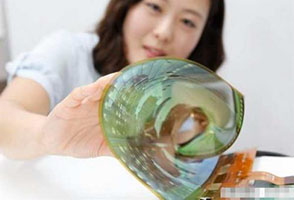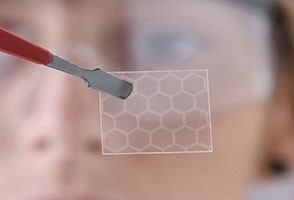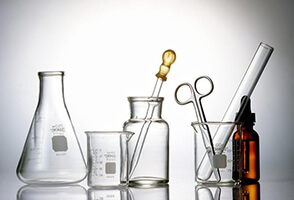According to Amine Suppliers, there are many materials that make up OLEDs, including anode materials, cathode materials, buffer layer materials, carrier transport materials, and luminescent materials.
1. Anode material
The anode material of OLED is mainly used as the anode of the device, and its work function is required to be as high as possible in order to improve the efficiency of hole injection. OLED devices require that one side of the electrode must be transparent, so ITO conductive glass, a transparent material with high work function, is usually used as the anode.
2. Cathode material
The cathode material of the OLED is mainly used as the cathode of the device. In order to improve the electron injection efficiency, a metal material with the lowest work function should be selected, because the injection of electrons is more difficult than the injection of holes.
3. Buffer layer material
According to the Benzene Supplier, the transmission rate of holes in OLEDs is about twice that of electrons. In order to prevent the transmission of holes to the organic/metal cathode interface and cause light quenching, a buffer layer of CuPc should be introduced when preparing the device. As a buffer layer, CuPc can not only reduce the interface barrier between the ITO/organic layer, but also increase the adhesion of the ITO/organic interface, increase the hole injection contact, inhibit the injection of holes into the HTL layer, and make electrons and The injection of holes is balanced.
4. Carrier transport materials
OLED devices require that the holes injected from the anode and the electrons injected from the cathode can be injected into the light-emitting layer in a relatively balanced manner, that is, the injection rate of holes and electrons should be basically the same, so it is necessary to choose a suitable hole and electron transport material. In the working process of the device, heat may cause the transmission material to crystallize and cause the performance of the OLED device to deteriorate. Therefore, we should choose a material with a higher glass transition temperature (Tg) as the transmission material. In the experiment, NPB is usually used as the hole transport layer, and Alq3 is used as the electron transport material.
5. Luminescent materials
Light-emitting materials are the most important materials in OLED devices. Generally, luminescent materials should have high luminous efficiency, preferably have electron or hole transport properties or both, and can be made into stable and uniform films after vacuum evaporation. Their HOMO and LUMO energies should match the corresponding electrodes. And other characteristics.
Among them, Chemical Intermediate Manufacturer say that the new light source OLED is manufactured based on some of the above-mentioned organic materials, and the function of the light-emitting layer is to convert electrons into a light source. After more than 20 years of experiments and research, the new light source OLED is highly anticipated and praised, especially the new eye protection OLED, because it is a surface light source, close to natural light, it will not produce glare, glare, fatigue, ultraviolet light, blue light and low thermal radiation. The condition, more environmentally friendly than LED lights, is said to be one of the healthiest lighting fixtures at present, opening a new generation of healthy lighting lifestyle.
According to Amine Suppliers, there are many materials that make up OLEDs, including anode materials, cathode materials, buffer layer materials, carrier transport materials, and luminescent materials.
1. Anode material
The anode material of OLED is mainly used as the anode of the device, and its work function is required to be as high as possible in order to improve the efficiency of hole injection. OLED devices require that one side of the electrode must be transparent, so ITO conductive glass, a transparent material with high work function, is usually used as the anode.
2. Cathode material
The cathode material of the OLED is mainly used as the cathode of the device. In order to improve the electron injection efficiency, a metal material with the lowest work function should be selected, because the injection of electrons is more difficult than the injection of holes.
3. Buffer layer material
According to the Benzene Supplier, the transmission rate of holes in OLEDs is about twice that of electrons. In order to prevent the transmission of holes to the organic/metal cathode interface and cause light quenching, a buffer layer of CuPc should be introduced when preparing the device. As a buffer layer, CuPc can not only reduce the interface barrier between the ITO/organic layer, but also increase the adhesion of the ITO/organic interface, increase the hole injection contact, inhibit the injection of holes into the HTL layer, and make electrons and The injection of holes is balanced.
4. Carrier transport materials
OLED devices require that the holes injected from the anode and the electrons injected from the cathode can be injected into the light-emitting layer in a relatively balanced manner, that is, the injection rate of holes and electrons should be basically the same, so it is necessary to choose a suitable hole and electron transport material. In the working process of the device, heat may cause the transmission material to crystallize and cause the performance of the OLED device to deteriorate. Therefore, we should choose a material with a higher glass transition temperature (Tg) as the transmission material. In the experiment, NPB is usually used as the hole transport layer, and Alq3 is used as the electron transport material.
5. Luminescent materials
Light-emitting materials are the most important materials in OLED devices. Generally, luminescent materials should have high luminous efficiency, preferably have electron or hole transport properties or both, and can be made into stable and uniform films after vacuum evaporation. Their HOMO and LUMO energies should match the corresponding electrodes. And other characteristics.
Among them, Chemical Intermediate Manufacturer say that the new light source OLED is manufactured based on some of the above-mentioned organic materials, and the function of the light-emitting layer is to convert electrons into a light source. After more than 20 years of experiments and research, the new light source OLED is highly anticipated and praised, especially the new eye protection OLED, because it is a surface light source, close to natural light, it will not produce glare, glare, fatigue, ultraviolet light, blue light and low thermal radiation. The condition, more environmentally friendly than LED lights, is said to be one of the healthiest lighting fixtures at present, opening a new generation of healthy lighting lifestyle.




